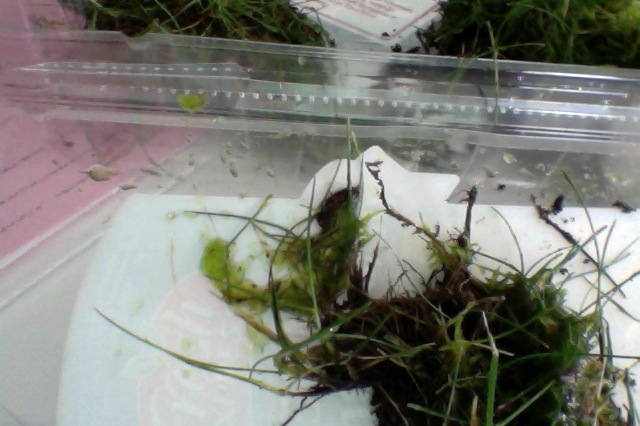Written by Sarah F.
Here is a story of one of the more interesting plant clinic challenges recently:
The problem and sample came into plant clinic on turf – it was an excellent sample with roots and soil attached. There were big 10/12′ x 10/12′ patches of green slime looking like very soft lime jello on the true surface. The fall risk for the clients was huge as the patches were very slippery and the lawn sloped down to the water under tall trees with an east exposure.
The clinicians decided that this substance was probably related to too much water and over use of fertilizer. Looking at it throughout the clinic microscope, one could not see any cell wall or any differing features , just a green soft slimy presence smelling a bit like primordial ooze. The client was emailed WSU information on general lawn maintenance and given guidelines for the future use of general lawn care and fertilizer use.
Here is the the response and diagnosis with the help of wonderful Jenny Glass WSU Diagnostic Clinic in Puyallup.
“A sample from your Jefferson County lawn was submitted to our diagnostic lab at WSU Puyallup. Our response to the green jello like substance:
The jelly green material growing in places in your lawn appears to be several species of algae (many of which are also known as cyanobacteria). Under the microscope, numerous algal cells were observed. We have no algal specialist on staff to identify individual species. In past samples where this type of growth has been problematic, two main issues have been noted:a) moisture is often abundant. Not much you can do about rain but if irrigating make sure you aren’t overapplying and that the drainage is good. Lawn information is enclosed.b) sometimes abundant growth is associated with a nutrient source (overfertilization is one possibility but other sources of nitrogen, such as manures/septic drainfields/etc. should be examined to see if they might be playing a role in the onset of the problem.Physical removal is probably the only practical option you have in this situation. The problem may go away when conditions are less moist. Do make sure there isn’t some potential underlying nutrient source contributing to its growth. I am attaching the information on black algae from the PNW Plant Disease Management Handbook http://pnwhandbooks.org/plantdisease/lawn-and- turf-algae that indicates certain copper fungicides and other chemistries might help suppress the growth of algaes but are not going to completely solve the issue. Follow label directions carefully if pesticides are used.



